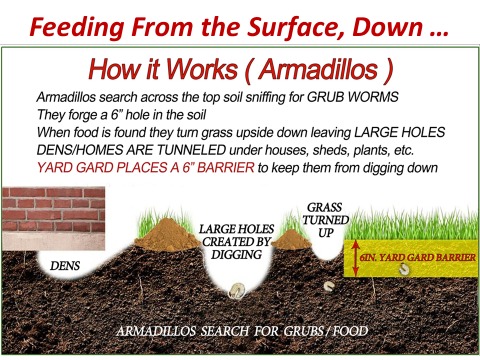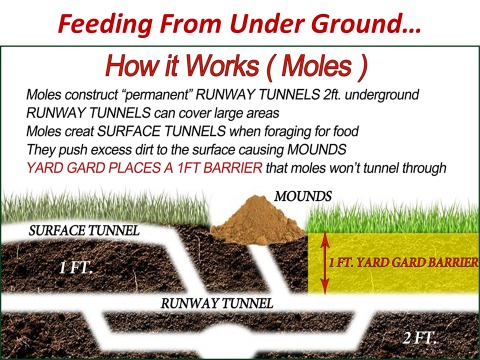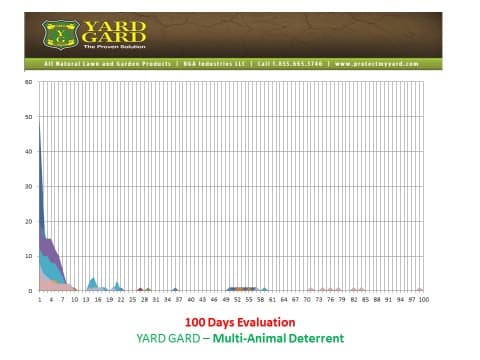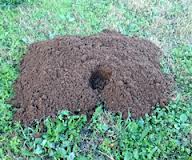Animal foraging (feeding), do so in one of two ways:

Or they are…

- Anything (Product/Ingredients) that decreases a behavior
- makes it occur less frequently, or
- makes it less likely to occur –
- is termed a punisher.
- Often, an animal will perceive –
- “Ending Something Good” or
- “Starting Something Bad”
- as something worth avoiding.
- These punisher consequences will decrease the behaviors.
Animal Repellents Generally Rely On:
- Fear (Smell)
- Conditioned avoidance
- Pain
- Taste
- Fear (Smell) – inducing repellents contain compounds that emit sulfurous odors.
It has been interpreted that the avoidance of these odors is a fear response,
suggesting herbivores perceive sulfurous odors as indicators of predator activity.
2. Conditioned Avoidance occurs when ingestion of a food is paired with pain, nausea or
gastrointestinal distress.
Animals generally don’t eat much of a food, if it is associated with illness
3. Pain is caused by using active ingredients that cause irritation (pain) when they contact trigeminal
receptors in the mucous membranes of the: mouth, eyes, nose, and gut.
4. Taste can also induce avoidance.
Bittering agents are often used to induce a bad taste.
Peppers have bad taste and pain associated to the concentrations.
Delivering Repellents to the Animal.
For plant eating pest animals, the repellents may be:
incorporated into the plant
(Systemic delivery),
spread throughout an area
(Area delivery),
applied to the plant
(Contact delivery).
Systemic repellents are compounds absorbed and translocated by the plant,
rendering the foliage less desirable. Systemic delivery is ideal.
The repellents are contained within the plant.
They cannot be washed off, and the aversive agents are moved to new foliage as it grows.
Area repellents are products that
create a chemical barrier that the animals will not cross, or
products that permeate an area with an odor that cause animals to avoid the area.
Contact repellents are products that are
topically applied or attached directly to a plant.
evidence suggests that chemical repellents are most effective when they are applied directly to the plants.
Types of Repellents
There are distinct differences between the types of repellents.
In general:
- Topical repellants performed better than area repellents.
- Fear-inducing repellents performed better than the other types of repellents.
- Repellents containing decaying animal proteins,
- such as putrescent egg or slaughterhouse waste,
- appeared to be effective.
How to get the stimulus or punishers to the animal?
- Liquid– typically wash away in the rain
- Powder – have Short life span
- Pellet– allows for wide range of ingredient use and have
- longer lasting effectiveness.

The following graphs reflect the efficiency of three different repellent products,
each using the following repellent characteristics:
Positive Punishment:-
Something is added to decreases the behavior of digging in the treated lawn.
Fear (Sense of Smell) –
inducing repellents contain compounds that emit sulfurous odors.
It has been interpreted that the avoidance of these odors is a fear response,
suggesting herbivores perceive sulfurous odors as indicators of predator activity.
Taste (Sense of Taste) –
can also induce avoidance.
Bittering agents are often used to induce a bad taste.
Peppers have bad taste and pain associated to the concentrations.
Area repellents –
create a chemical barrier that the animals will not cross, or
products that permeate an area with an odor that cause animals to avoid the area.
Pellets–
allow for wide range of ingredient use.
Note, for the following charts:
- Activity (quantity) is recorded on the left, vertical axis.
- Time (duration) is recorded on the bottom, horizontal axis.



These type repellents are typically effective for 100 plus days.



0 Comments